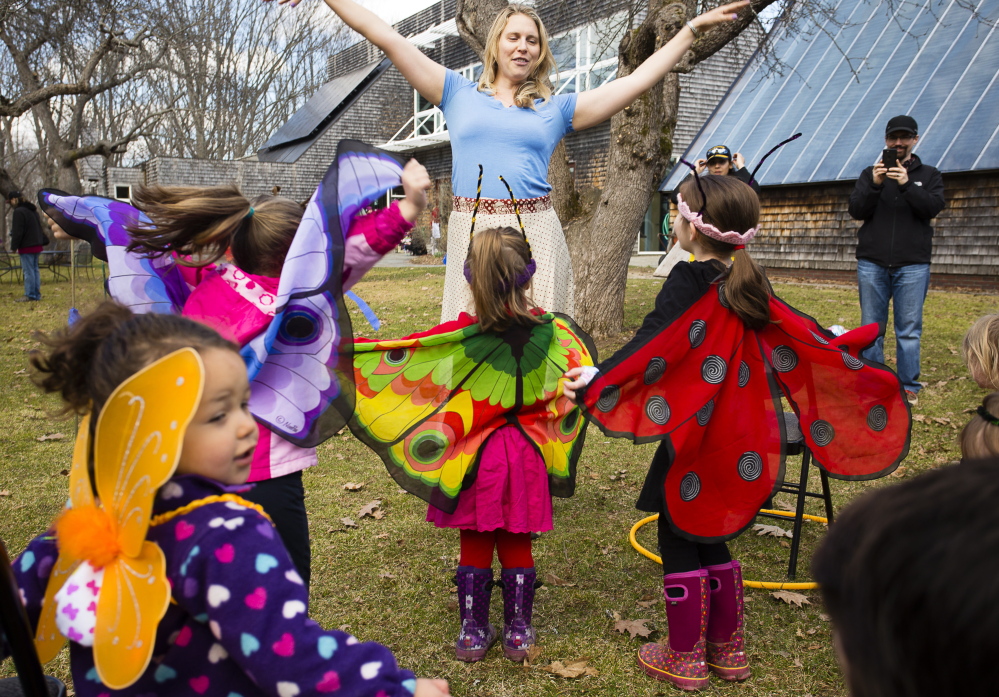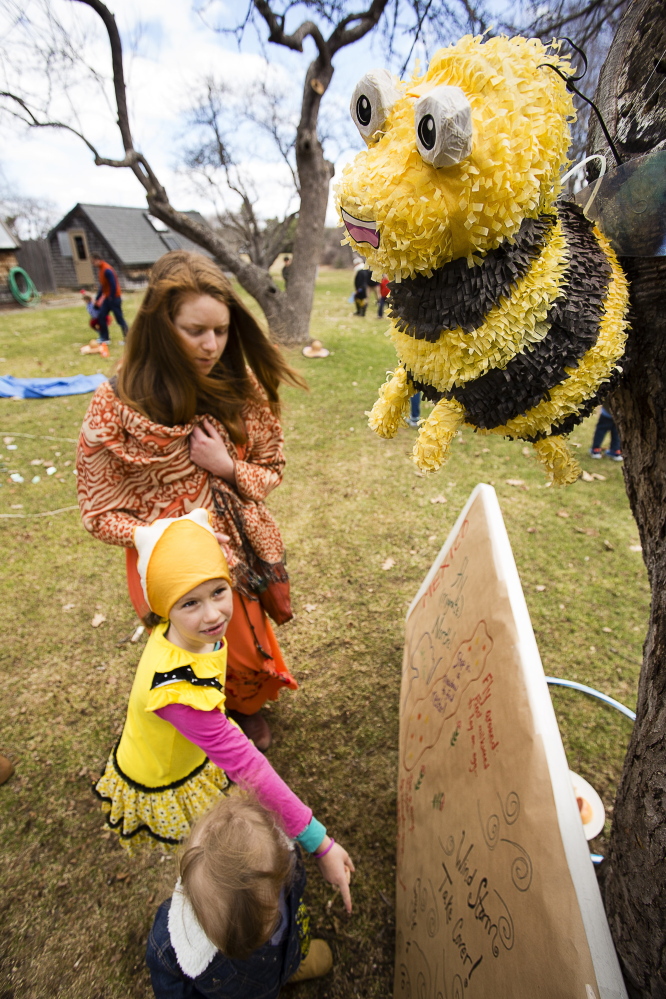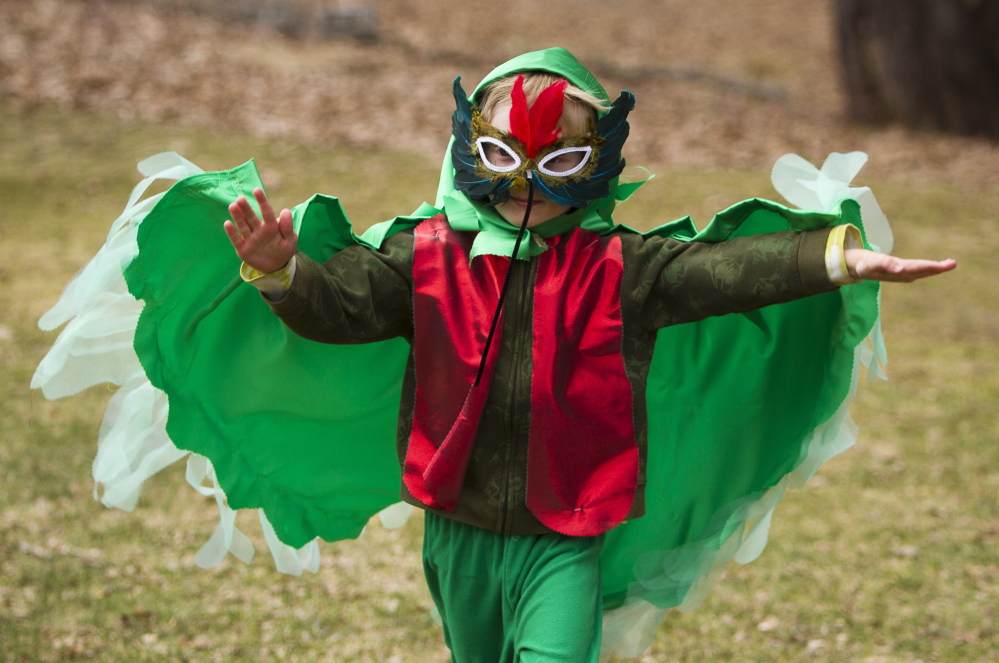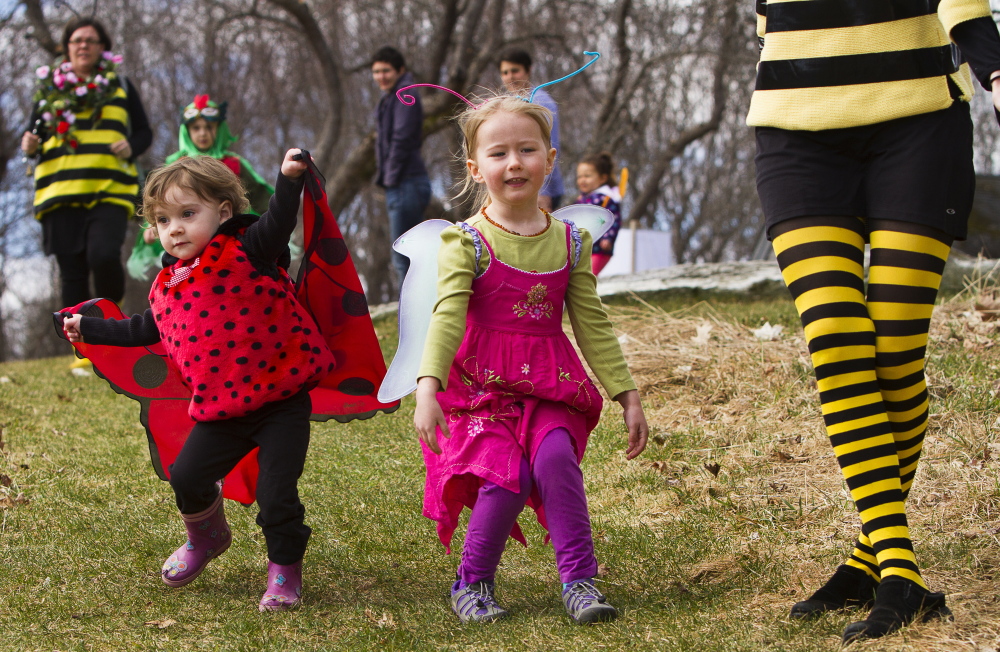FALMOUTH — Maine Audubon educator Katrina Venhuizen asked her audience of preschoolers why the monarch butterfly prefers to winter in Mexico rather than Maine.
“Can they put on a jacket if it is too cold? Can they go to the grocery store to get some food?” she asked her audience.
“N-o-o-o-o!” the children answered.
Venhuizen then led the group on a whirlwind re-enactment of the monarch butterfly’s migration from Mexico to Maine. Flapping their arms as though they were monarchs, the children skirted a blue tarp representing the Gulf of Mexico, went through a maze of fluttering ribbons on poles standing in for the wind, and alighted on pink blobs on chairs, representing milkweed, the monarch’s favorite food.
They were among about 300 children and parents who showed up Sunday for the Pollinators Parade and Picnic, a celebration of spring and monarch butterflies, honeybees and other embattled pollinators. The event was sponsored by Maine Audubon and Birth Roots, a 10-year-old nonprofit that provides support to new parents.
With toddlers dressed as butterflies and bumblebees, the cuteness factor reached new heights as children ran around the yards at Maine Audubon’s Gilsland Farm Center, flapping their wings and hunting for monarch cutouts with butterfly nets.
Leah Deragon, co-founder of Birth Roots, said she got the idea for the event last year.
“I wanted to do something that recognized spring and monarch butterflies. I feel like the monarch butterflies said to me, ‘We need your help,'” Deragon said.
Doug Hitchcox, Maine Audubon’s staff naturalist, said he was pleasantly surprised by the turnout. He said the event gave him a chance to talk about the importance of pollinators and how quickly they can become endangered.
The monarch butterfly population has dropped by 90 percent in the past two decades, according to the U.S. Fish and Wildlife Service.
Hitchcox said loss of their forest habitat in Mexico, where monarchs migrate from the United States and Canada to hibernate in winter, is partly to blame, along with the drought on the Pacific coast. But he said the real culprit are neonicotinoids, synthetic herbicides widely used in the Corn Belt that have wiped out milkweed, the only food monarch larvae feed on.
The monarchs that reach Maine each summer are the great-great-great-grandchildren of the ones that flew to Mexico for the winter.
Hitchcox said the habitat for monarchs in Maine, where milkweed is still abundant, is good. Getting here is the hard part.
“Let’s keep this the safe haven so the few that get here have the best conditions,” Hitchcox said.
Some parents said the pollinator parade helped them feel less helpless in the fight to save monarch butterflies.
The four members of the Fengler and Zando family of Scarborough were dressed as bumblebees and ladybugs.
“We pulled it together, a complete package,” said Ken Fengler, the father.
His wife, Marla Zando, is active with Citizens for a Green Scarborough and is the mother of Eli, 6, and Zack, 6 months.
“This is great to get kids excited about pollinators,” Zando said.
Copy the Story LinkSend questions/comments to the editors.







Success. Please wait for the page to reload. If the page does not reload within 5 seconds, please refresh the page.
Enter your email and password to access comments.
Hi, to comment on stories you must . This profile is in addition to your subscription and website login.
Already have a commenting profile? .
Invalid username/password.
Please check your email to confirm and complete your registration.
Only subscribers are eligible to post comments. Please subscribe or login first for digital access. Here’s why.
Use the form below to reset your password. When you've submitted your account email, we will send an email with a reset code.